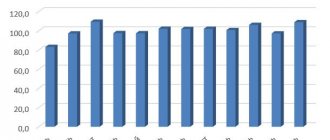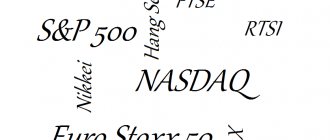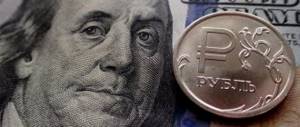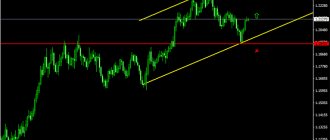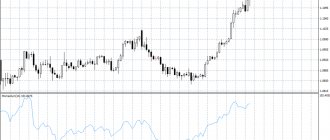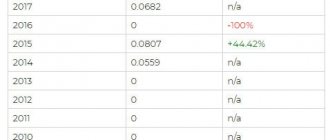The concept and objectives of the gold and foreign exchange reserves of the Russian Federation
Gold and foreign exchange reserves include highly liquid assets that are at the disposal of the Government of the Russian Federation and the Central Bank. Gold and foreign exchange reserves consist of:
- monetary gold;
- special drawing rights - SDR;
- the state's reserve position in the International Monetary Fund;
- the currency part of the National Welfare Fund - NWF;
- other assets.
Main tasks of gold and foreign exchange reserves:
- finance deficits when a balance of payments occurs;
- carry out operations on the foreign exchange market to stabilize the exchange rate of the Russian ruble;
- build trust among foreign investors and the country's population;
- maintain a stable level of the national currency - the Russian ruble;
- create a base for borrowing on international markets.
The country's large foreign exchange reserves contribute to stability, high credit ratings and lower international borrowing costs. But for the formation of reserves, funds are withdrawn from the state economy, which means that less investment flows into the real sector.
The size of the sufficiency of gold and foreign exchange reserves in the country is divided by the ratio of reserves to GDP in US dollars. In 2021, this figure reached 28%, in China - 23%, in the UK - 7%, and in the USA - 2.2%. Not every state transfers funds to gold and foreign exchange reserves, especially if it already has an established reputation and a high credit rating.
Exchange difference
Exchange rate revaluation also played a positive role for the Bank of Russia: the euro has been rising in price against the dollar since May (it has strengthened by almost 5% since the beginning of the year, the current rate is $1.18 per euro). The euro accounts for 30.8% of Russian reserves (the largest share). When the euro strengthens, the dollar value of reserves increases.
In July, Russia's gold and foreign exchange reserves as a whole increased by $22.9 billion, with $13.4 billion of this growth coming from an increase in the price of gold and $11.6 billion from changes in exchange rates (the rest from other changes).
However, operations with reserves (sale of currency according to the budget rule, transfer from one asset to another) in recent months have brought a negative result to the Bank of Russia: since March, as a result of such operational changes, reserves have decreased by $23.7 billion. But this reduction was more than offset by an increase in prices gold and exchange rate revaluation.
The rating agency Fitch Ratings predicts that Russia's international reserves will drop to $570 billion by the end of 2021.
Russia's international reserves consist of foreign exchange reserves of the Ministry of Finance (National Wealth Fund and other foreign exchange funds of the Ministry of Finance amounting to approximately $120 billion) and the Central Bank's own reserves, which in theory can be used for foreign exchange interventions in order to maintain financial stability. Currency sales are carried out from the Ministry of Finance's reserves according to the budget rule, since the Russian budget is currently not receiving enough oil and gas revenues. Since April, the Ministry of Finance has sold currencies equivalent to more than 600 billion rubles. ($8.6 billion). The Central Bank places its reserves and the reserves of the Ministry of Finance in foreign assets, such as government bonds of European countries or foreign currency deposits in foreign banks.
International State Reserve
At the end of 2021, the size of international reserves, according to the Central Bank of the Russian Federation, increased to $468 billion. During 2021, the figure increased by another $86 billion, and reached a size of $554 billion. By the beginning of 2021, the gold and foreign exchange reserves reached the level of $595.7 billion .
Gold and foreign exchange reserves are growing primarily due to diversification and purchases of physical gold. In 2021, Russia purchased more than 275 tons of the precious metal, and in 2021 and 2021, the trend continued, 158 and 27 tons were purchased, respectively. But the positive growth trend was halted due to the COVID-19 pandemic, stalling growth at just below 3,000 tons.
Russian news feeds have repeatedly been full of headlines that the country's gold and foreign exchange reserves have exceeded the amount of external debt. In fact, it is important to consider that the amount of debt to foreign countries is a composite value. It includes not only Russia’s current debt to other countries, but also current debts of corporate business. And when calculating the gold and foreign exchange reserves, only government assets are taken into account. Therefore, the values are poorly comparable with each other.
Foreign exchange reserves in the Central Bank of the Russian Federation are formed in US dollars, euros, Swiss francs and Japanese yen. According to the structure of Russia's gold and foreign exchange reserves, about 75% is accounted for by foreign currency. The share of gold in the Russian Federation is incomparably lower than that of European countries, where the average is 50-55%.
Dynamics of Russia's gold reserves over the past hundred years
If you delve into the history of the issue, it turns out that our gold and foreign exchange reserves changed from 1913 to 2021, sometimes dramatically. And this is how it was:
- Before the revolution, the size of the imperial gold reserve reached 1.34 thousand tons.
- Until mid-1917, the concept of the “gold standard” was in use in the Russian Empire. In other words, there was a system in which the standard for any calculations was nothing more than gold. Each ruble was equal to 0.78 grams of precious material.
- At the beginning of the First World War, domestic gold and foreign exchange reserves were as follows: 1 billion 695 million rubles or 1311 tons of gold (over 60 billion dollars). Before the revolutionary unrest, a share of the reserves was transported to Great Britain, where, due to the need to pay interest, it was slightly reduced. The remainder of the reserves was kept in Petrograd for some period, but then it was sent to Nizhny Novgorod, Kazan, and immediately before the October Revolution - to Finland.
- In 1918, approximately 250 tons of the yellow metal were transported to the Germans. Two years later, the volume of gold and foreign exchange resources of the young republic was again adjusted, and again not in the direction we would like. It has decreased:
- for 12 tons of gold (or 15 million rubles) in connection with their transportation to Estonia;
- by 4 million rubles due to forced payments to Latvia;
- by 5 million - due to due deductions in favor of Turkey;
- by 200 tons of gold due to the purchase of Western European railway equipment.
- Gold and foreign exchange accumulations reached their historical peak during the reign of Joseph Stalin. Just before the Great Patriotic War, reserves amounted to 2800 tons of gold, and after 12 years, they decreased by 300 tons.
- Further picture of profit and loss:
- 1993 - $4 billion;
- 2000 - 12;
- 2005 - 124;
- 2007 - 303;
- 2008 - 478;
- 2014 - 497;
- 2017 - 377.
The Ministry of Finance of the Russian Federation maintains strict records of gold and foreign currency reserves
Russia surpasses Saudi Arabia in gold and foreign currency reserves
Russia currently ranks 4th in international reserves, pushing aside Saudi Arabia, which dropped to 17th position by the end of 2021. This situation arose due to the increased influence of the Russian Federation in negotiations with the OPEC alliance, when discussing issues regarding the volume of oil production. Despite the fact that barrel prices dropped significantly in 2021 and 2021, the Government of the Russian Federation managed to fulfill all social obligations without attracting funds from gold and foreign reserves.
Current oil prices turned out to be much lower than expected in OPEC countries, including Saudi Arabia. In the Saudi capital, Riyadh, with a lack of revenue from oil sales, they are forced to spend gold and foreign exchange reserves on social needs. While in Russia a regime of increased reserves has been introduced for several years due to fear of further sanctions from America and the Eurozone countries.
Saudi Arabia, with the price of Brent oil below $55-60, is not receiving the budgeted profit, so the country's reserves are being used up. Ongoing trade wars coupled with the pandemic are leading to even lower prices in the oil market.
In Russia, there is a fairly widespread opinion in business circles that it is necessary to transfer less to the country’s gold and foreign exchange reserves and spend more to develop its own economy. But at the moment, the state adheres to the chosen path and follows the approved strategy.
What will happen if Russia's reserves are greatly reduced?
If the RF stock size decreases quickly and/or significantly:
- the national currency of Russia will not have the necessary support;
- citizens' trust in the state's monetary policy will be lost;
- the country's international rating will decrease;
- The Russian Federation will no longer be able to repay its external debt obligations;
- there will be a risk of being unable to provide support for the state and its citizens in the event of a national disaster;
- Russia's economic independence will be in question.
Despite all the above facts, it is not recommended to increase the share of gold in gold and foreign currency reserves, since this precious metal falls in price, therefore, becomes less liquid when compared with reserves in foreign currency, and also does not generate interest income.
Abandonment of US bonds in favor of gold
The improvement of the Russian Federation's position was influenced by the policy of the Bank of Russia. He continues to actively divest from US government bonds while simultaneously increasing purchases of physical gold. This strategy was chosen in response to the imposed anti-Russian sanctions.
In the spring of 2021, the Russian Federation reduced the volume of investments in American securities by $1.6 billion. Investments fell to a minimum of $12 billion. This was reported by the US Treasury Department.
The maximum investment in American bonds was reached in 2010 - $176.3 billion. In November 2014, the volume decreased to 108 billion, and by December there were only 86 billion dollars. The sharpest reduction in investment occurred in the spring of 2021; Russia got rid of American securities worth $47.5 billion. The Russian Federation's portfolio in the United States was reduced by almost half.
In 2021, the Russian Federation invested small amounts in US bonds, but the final volume did not exceed 2% of the country’s gold and foreign reserves. In April 2021, investment fell below $4 billion.
The head of the Central Bank of the Russian Federation explained that such diversification of reserves is caused by financial, economic and geopolitical risks. It is not safe to invest in the economy of a country that imposes anti-Russian sanctions.
How to avoid the negative consequences of sanctions?
What should we do if our international savings are frozen, since such a danger exists due to the current situation in world politics? It is imperative to reduce the share of the dollar in reserves. Now this process has started, but it is not moving as efficiently as we would like. In addition, until now this decline has been dictated not by considerations of financial security, but by the fact that dollar savings are characterized by low returns.
Many countries partially transfer reserves into “second-class currencies”, for example, in close bilateral, mutually beneficial trade. This money is easier to earn and is more in demand for economic relationships. Let’s say that the Chinese yuan is considered a “second-class” hard currency. Its share in the total money circulation is constantly increasing. And given the expansion of trade ties with our eastern neighbor, this move may turn out to be a real breakthrough in solving the problem.
In any case, the reliability of the country's gold and foreign exchange reserves must be supported by the state, as well as the well-being of the citizens of the Russian Federation.
Why gold and not the dollar
Historically, the states of the world created their reserves in gold. But in 1944, at the Bretton Woods conference, the United States promoted its national currency. The American currency began to act as an obligation to convert the dollar and gold.
Over time, the “Gold Standard” moved away and was replaced by free conversion. The dollar has become a world currency on a par with a precious metal. In 1971, with the fall of the Bretton Woods system, the United States abandoned the proportional conversion of its national currency into gold. But the dollar still maintains a dominant position in the international reserves of different countries.
The advent of the euro changed the situation a little. A number of leading European countries sought to prevent the excessive strengthening of the dollar, but now the confrontation has become conditional.
Since 2010, the world's central banks have stopped selling gold and have become exclusively buyers. Some countries, of course, continue to sell their reserves, but most often this happens to cover external debt. 2021 saw very high demand for the precious metal. Most countries in the world leave their gold reserves intact. This is the most sought after reserve during periods of economic downturn or geopolitical instability. The same situation was observed in 2020. However, in the Russian Federation, the growth rate of gold purchases was not as significant as in the previous 2 years.
Over the past 6 years, gold has tripled in the structure of reserves. The data in the table is given at the beginning of the year:
| Year | Size of gold and foreign exchange reserves, billion dollars | Ratio of gold and currency in billions of dollars |
| 2015 | 385 | 46 and 339 |
| 2016 | 368 | 48 and 319 |
| 2017 | 377 | 60 and 317 |
| 2018 | 432 | 76 and 356 |
| 2019 | 468 | 86 and 382 |
| 2020 | 554 | 110 and 444 |
| 2021 | 595 | 138 and 457 |
The strategy chosen in Russia today is aimed at increasing the volume of gold reserves in the structure of the country’s reserves. China is following the same course, reducing investment in US securities and increasing physical gold reserves.
How are gold and currency reserves formed?
The most effective method for the formation of reliable gold reserves as one of the components of gold and foreign exchange reserves (GER) is considered to be the casting of bars from the corresponding precious metal. Moreover, the material used should not contain at least any impurities. The formation of budget insurance from gold and foreign currency is in charge of Gokhran, a specialized office under the Ministry of Finance.
The presence of these savings is necessary for timely payment of government debts and covering the existing state budget deficit, and, of course, for generating income.
Russia's gold reserves
Current performance and latest data
In December 2021, Russia ranked 5th in the world among countries in terms of declared gold reserves, China was in 6th place. If we take into account the IMF's gold and foreign exchange reserves, the position of Russia and China becomes 6 and 7, respectively.
Russia informed the world community about its ownership of 2298.5 tons of gold at the end of 2021. The share of monetary gold is $133.67 billion, which in the total value of gold and foreign exchange reserves reaches 22.9%.
Read about the dollar exchange rate forecast and how to invest in gold in Brobank's articles.
Sources:
1. International reserves of the Russian Federation weekly. 2. International reserves of the Russian Federation monthly values
about the author
Klavdiya Treskova - higher education with qualification “Economist”, with specializations “Economics and Management” and “Computer Technologies” at PSU. She worked in a bank in positions from operator to acting. Head of the Department for servicing private and corporate clients. Every year she successfully passed certifications, education and training in banking services. Total work experience in the bank is more than 15 years. [email protected]
Is this article useful? Not really
Help us find out how much this article helped you. If something is missing or the information is not accurate, please report it below in the comments or write to us by email
Comments: 2
Your comment (question) If you have questions about this article, you can tell us. Our team consists of only experienced experts and specialists with specialized education. We will try to help you in this topic:
Author of the article: Klavdiya Treskova
Consultant, author Popovich Anna
Financial author Olga Pikhotskaya
- elektrik
04/14/2020 at 11:00 So how much gold is there in tons (grams)?The question remained unanswered!
Reply ↓
Klavdiya Treskova
04/14/2020 at 11:19 Post authorThank you for your attention, the article has been updated to reflect your question.
Reply ↓
